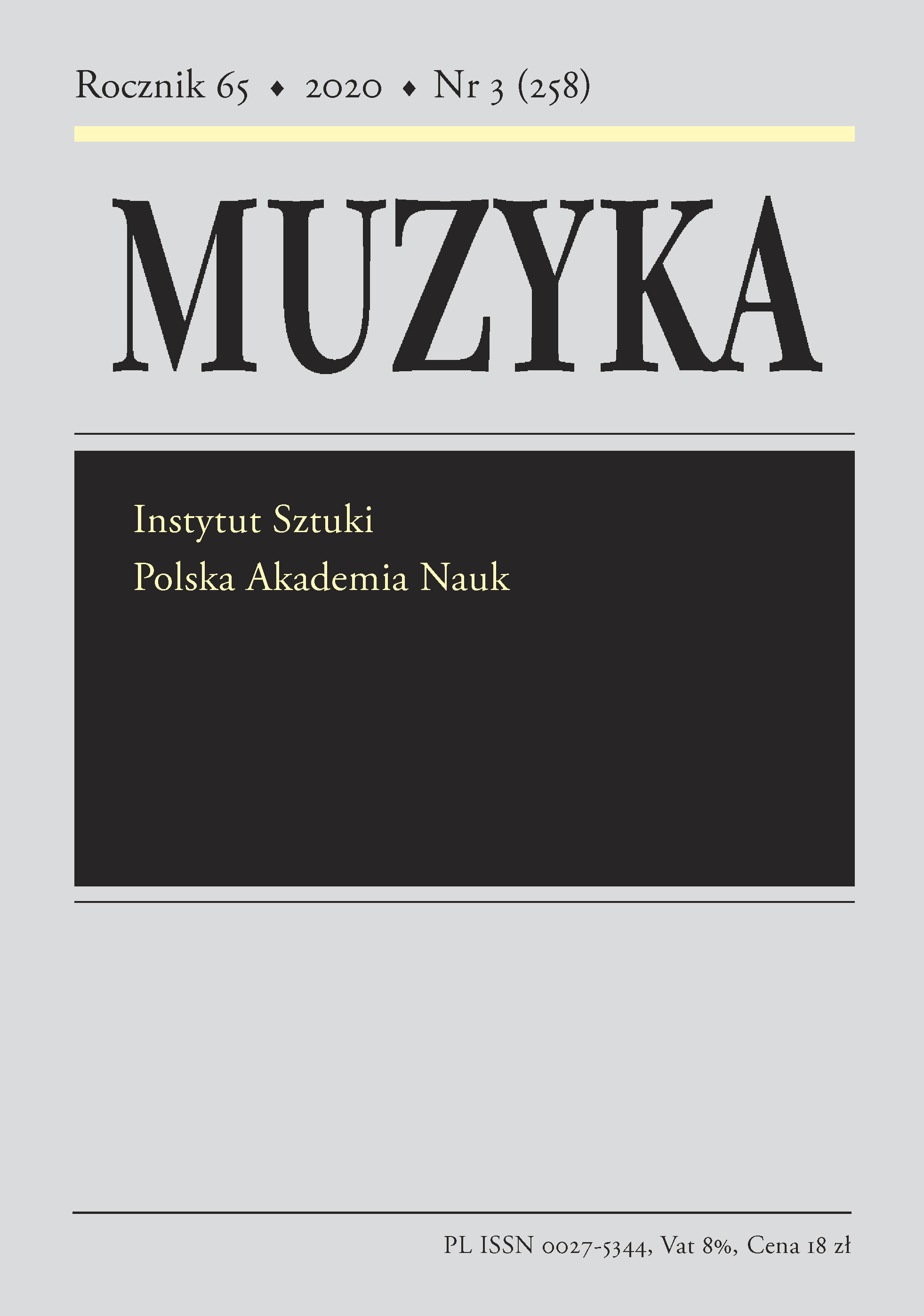Muzyka Artura Malawskiego do krakowskiej inscenizacji "Wyzwolenia" Stanisława Wyspiańskiego (1957) na tle wydarzeń odwilży
Artur Malawski’s Music for the Cracow Production of Stanisław Wyspiański’s ‘Liberation’ (1957) in the Context of the Political Thaw
Author(s): Wioleta MurasSubject(s): Theatre, Dance, Performing Arts, Music, Sociology of Art
Published by: Instytut Sztuki Polskiej Akademii Nauk
Keywords: Artur Malawski; 'Wyzwolenie"; Stanisław Wyspiański; theatre music;social realism;
Summary/Abstract: In the period of socialist realism, creative freedom was particularly restricted in the field of the theatre, where the use of the spoken word had the greatest potential impact on the audience. Theatre administration was centralised; a pre-defined style was imposed; staging the national classics was forbidden; censorship was omnipresent. These are only a few of the factors that made the functioning of theatres problematic. The political thaw, whose beginnings are associated with Stalin’s death, was a several-year-long process of gradually throwing off the yoke of censorship and imposed programmes. One of the symbolic works which returned to the Polish stages after many years of absence was Stanisław Wyspiański’s ‘Liberation’, premiered on 28th November 1957 at the Juliusz Słowacki Theatre in Kraków (dir. Bronisław Dąbrowski, music by Artur Malawski). The production received an engaging musical setting, whose functions, scope and symphonic-size performing forces prove that it was designed as an important element of the spectacle.The score consists of 25 sections, most of which (referred to by the composer as ‘motifs’) are linked to individual persons of the drama. At the director’s suggestion, Malawski composed colourful music abounding in sarcastic and mocking elements, whose aim was to question the status of the protagonists’ words, and, on the other hand, to introduce unreal and mysterious atmosphere in the scenes with masks. The composer combined folk elements (rhythmic, melodic, and sound idioms), song quotations, an oriental streak, and harmonic-rhythmic ‘spice’ in the form of strongly dissonant types of sound and sudden metrical-rhythmic changes. The music composed for the theatre corresponded with works which Malawski wrote in the main current of his activity as a composer. While writing his setting for ‘Liberation’, the composer struggled with a lethal cancer, which led to his death less than a month after the premiere. This music was therefore his swan song.
Journal: Muzyka
- Issue Year: 65/2020
- Issue No: 3
- Page Range: 41-68
- Page Count: 28
- Language: Polish

